The U.S. Jumping Team captured their third consecutive Olympic silver medal today in the Show Jumping Team Final here at the Château de Versailles in France. In addition to Paris 2024, they also won silver in the Tokyo 2020/21 Olympics Games and Rio de Janeiro 2016 Olympic Games. Great Britain won gold today with a total of two penalties (their last Olympic jumping team medal was gold in 2012 in London). Home country France took the bronze on a score of seven penalties (their last Olympic show jumping medal was gold in 2016 in Rio de Janeiro).
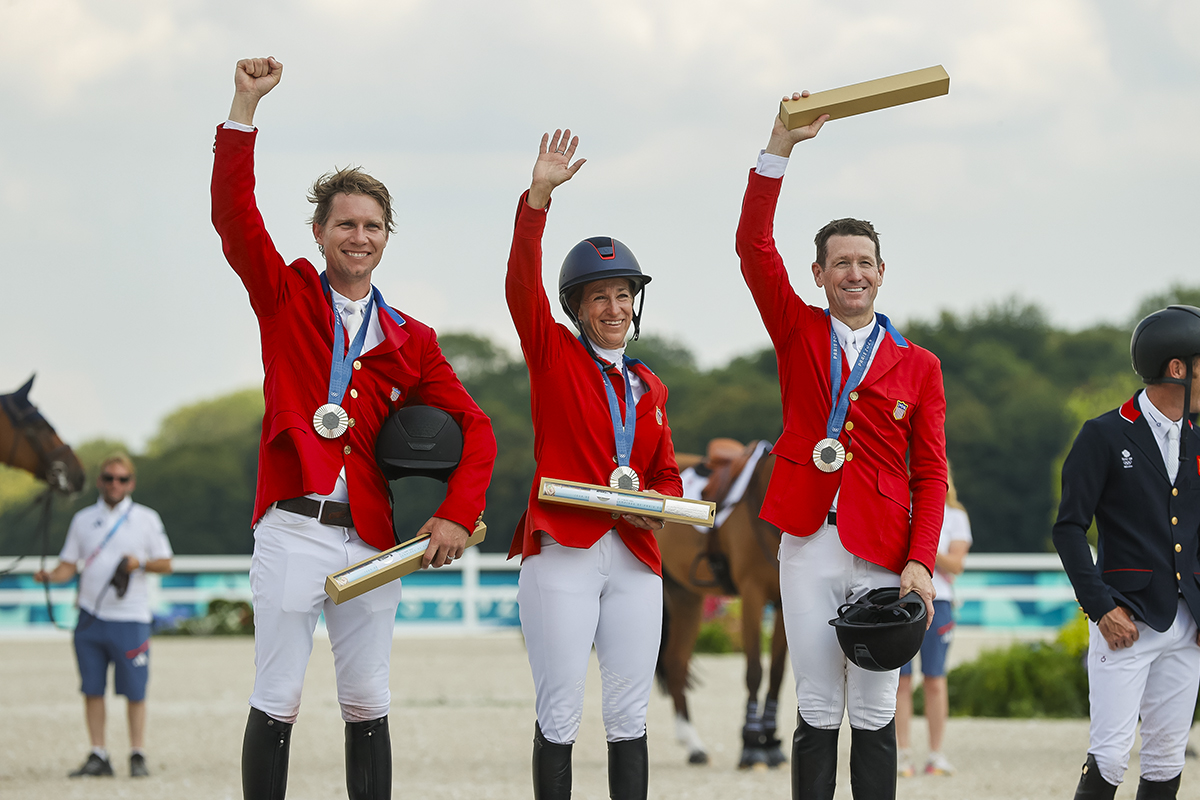
About the Course
Co-designed by Santiago Varela from Spain and Grégory Bodo from France, the course today was a bit more technically challenging today according to some of the riders. It was a bit longer in length too, yet the time allowed was the same as yesterday. There were 14 obstacles with 18 jumping efforts, including two doubles (which was one more than yesterday) and one triple combination. Time allowed was 79 seconds, the course length was 310 meters, and the prescribed speed was 400 meters/minute. Fence heights ranged from 0.9 meters to 1.65 meters. There was no water jump today, but there were liverpool jumps (essentially a “pan” of water under or behind a set of standards and rails). Many French landmarks and cultural items were incorporated into the design of the jumps again; there was one jump that looked like the base of the Eiffel Tower and one with standards that looked like the Arc de Triomphe, for instance.
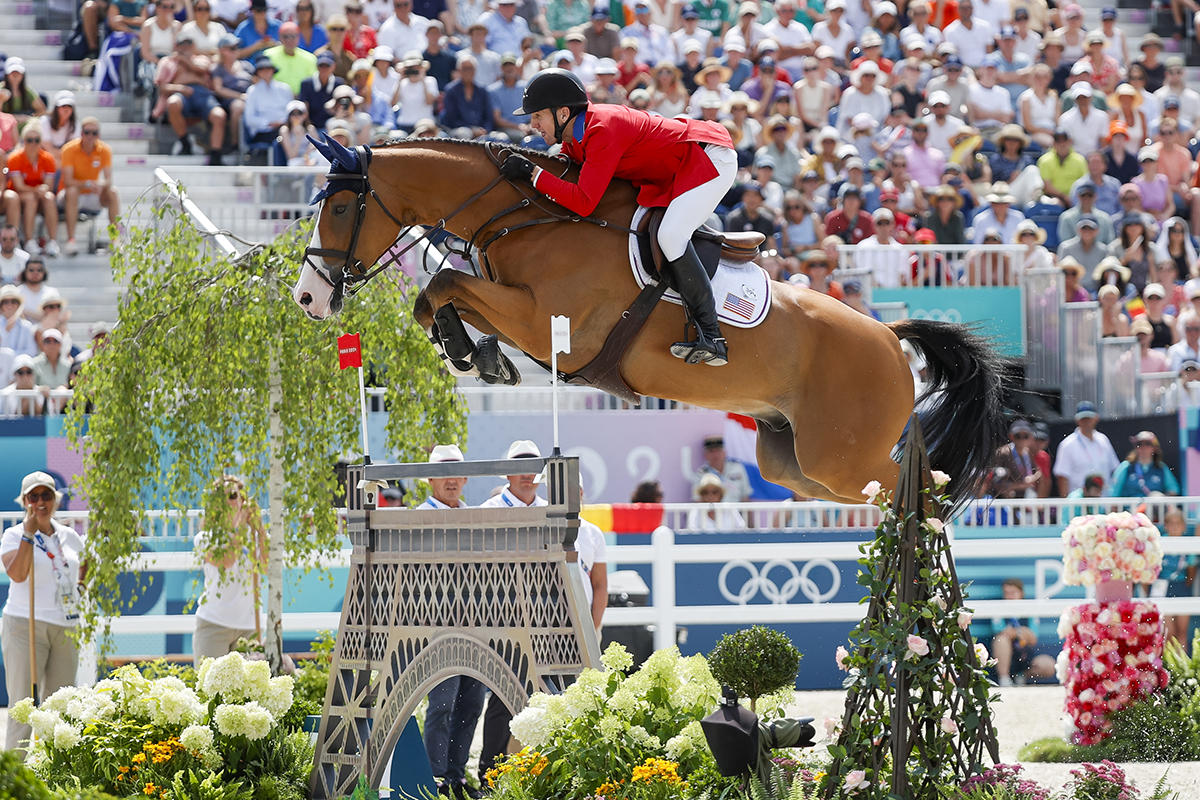
Olympic Show Jumping Team Final Summary
For today’s Team Final, the qualified teams (9 teams, 3 riders each) started this morning with a clean slate. (There were supposed to be 10 teams, but at the very last minute the Mexican team had to withdraw due to a “veterinary issue” for one of their horses, Carlos Hank Guerreiro’s horse Porthos Maestro WH Z, leaving nine teams and 27 riders on the start list). Any jumping or time faults a rider incurred were added to their team’s cumulative score and the lowest score won. The teams competing today were: Belgium; France; Germany; Great Britain; Ireland; Israel; the Netherlands; Sweden, and the USA.
After two riders for each team took their turn around the course and the scores were tallied during a ring grooming break, the final rider from each country jumped the course in reverse order of the standings (so, the top teams’ riders went toward the end in the final group). That put riders from the Netherlands, Ireland, USA, France, Sweden and Great Britain as the final countries to go in the last group.
When others dropped rails, but the USA’s McLain Ward and Ilex and Great Britain’s Scott Brash and Jefferson left them up, the medals were finally decided. Even though Brash and Jefferson had a time fault, they carried Great Britain to a two-point victory. France’s Julien Epaillard and Dubai Du Cedre took one rail down, but no more, so their team had the bronze in front of a very appreciative crowd.
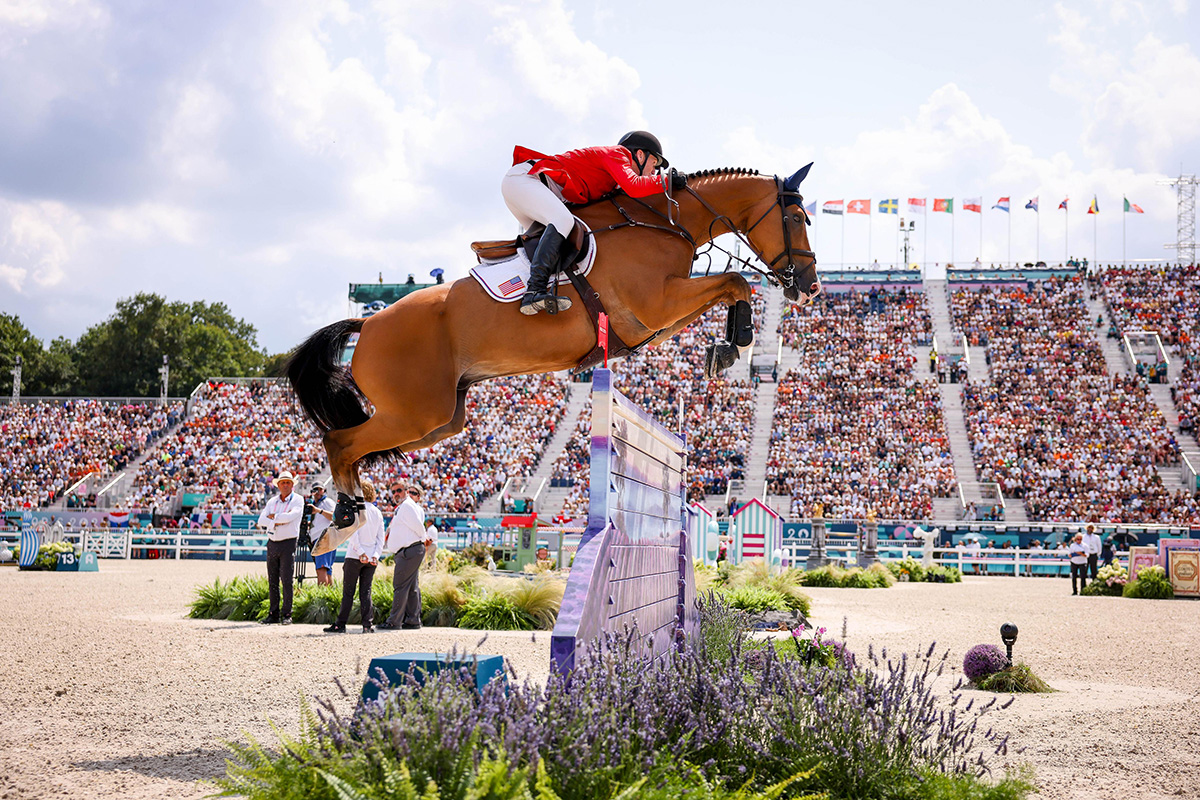
U.S. Team Steps Up
Team members Karl Cook (making his Olympic debut riding Caracole de la Roque), Laura Kraut (four-time Olympian—plus a year as an alternate—riding Baloutinue) and McLain Ward (six-time Olympian riding Ilex) earned their red, white and blue stripes by laying down two days of stellar team jumping rounds. They carried on a long tradition of U.S. show jumpers winning Olympic hardware.
Yesterday, the U.S. team finished on only six faults in the qualifier class, which easily put them into today’s team final. Today, starting on zero again, they only had four penalties to take the silver. Each day, two of the USA’s team riders jumped clear and within time, with the third rider only having one rail down. In the qualifier class yesterday, McLain Ward had one rail and two time faults for the total of six. Today, Laura Kraut and Baloutinue pulled one rail, but finished well within the time allowed.
Yesterday Kraut admitted to being quite nervous before her ride, but today she felt more confident, “Today I’m great. I’m disappointed I had one down, but he performed beautifully. I’m surprised that he had that down, but he kind of looked at it a little bit and I had maybe too much momentum. But other than that, I mean, he didn’t put a foot wrong. He’s the best.”
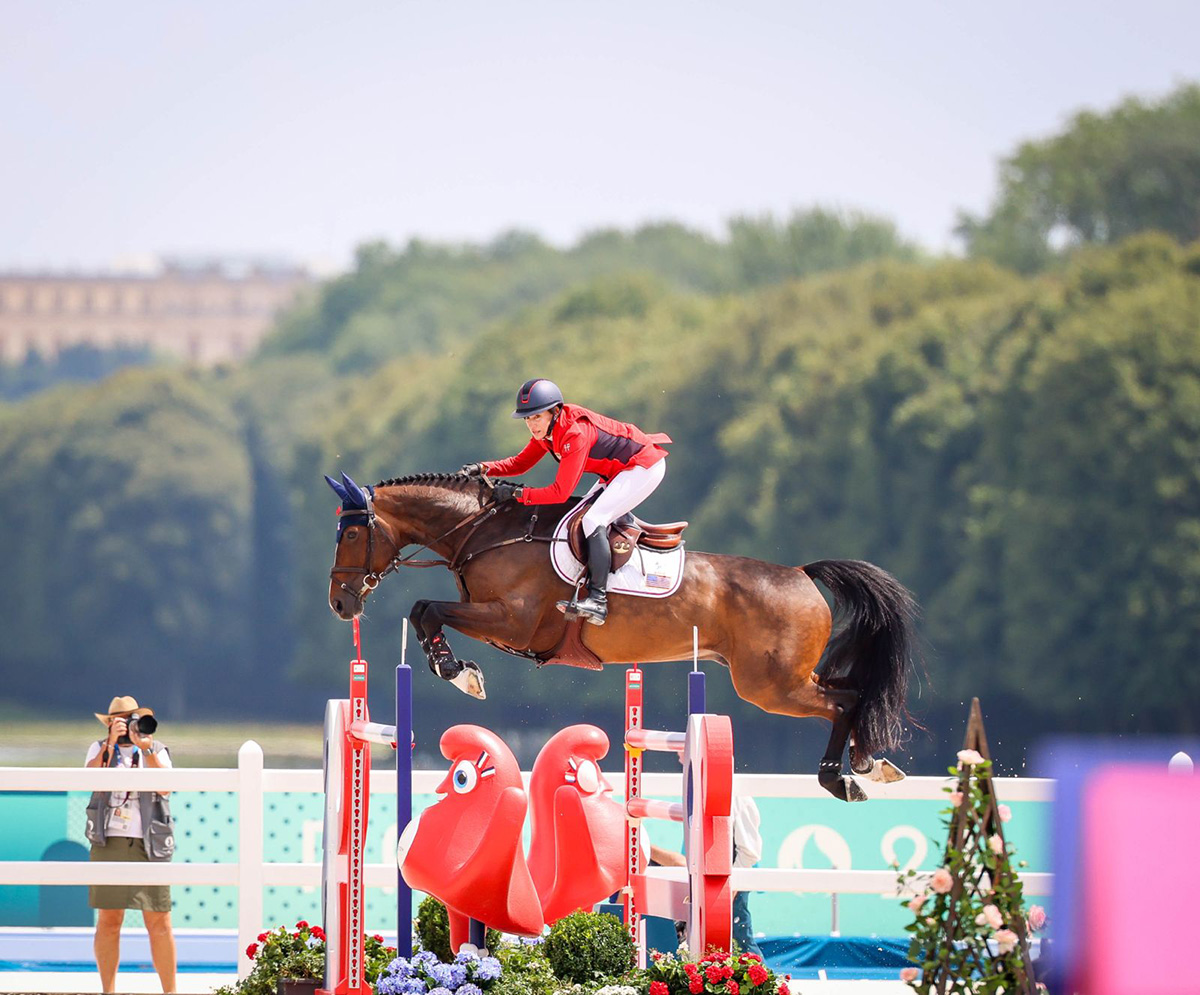
Cook had been the traveling reserve rider for the U.S. team with Caracole de la Roque, but was called up to compete in the very early hours of yesterday when Kent Farrington’s mare Greya horse showed signs of an allergic reaction (Greya is reported to be doing well now). Cook and Caracole de la Roque stepped up beautifully, producing two double-clear rounds in two days and making it look easy in the process.
The pair had also been members of the U.S. team for the Santiago Pan American Games last fall. At that time, Caracole de la Roque was still a fairly new ride for Cook and he was still figuring out the best way to ride her. They have really gelled since then and he rides her in a hackamore in competition (although he uses a different bridle on her in the warm-up ring, then switches to the hackamore).
Cook talked about the course and his horse after his ride today, “It’s a really tough course out there, as it should be―longer, bigger, wider, more careful, more technical than yesterday. It requires you to ride on the track that suits the stride you have. She’s such an amazing horse [Caracole]. She stuck with me the whole time. I couldn’t be happier. I felt more confident today, starting with a bigger canter and not having that fear that I’m going to have no ride-ability.”
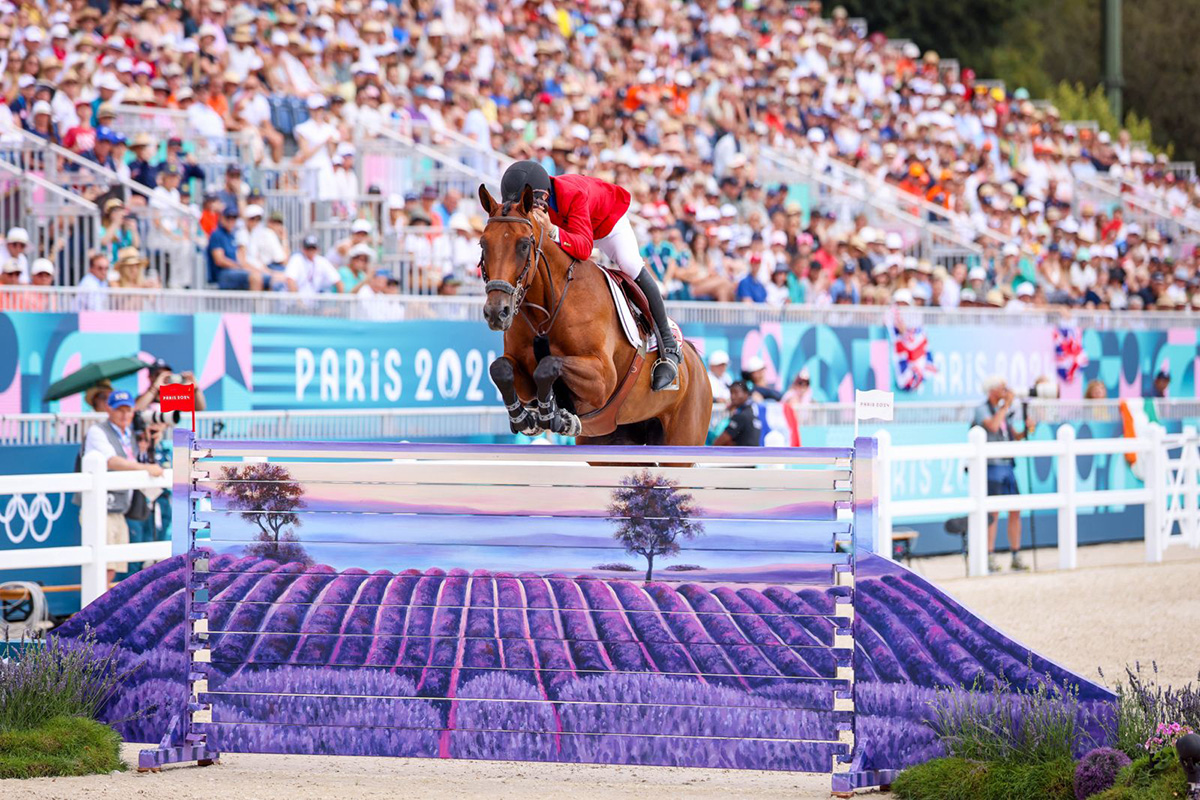
After the USA won silver, Chef d’Equipe Robert Ridland reflected on their team’s Olympic performance, “Arguably we came here with the strongest U.S. team in the last three Olympics. We had a strong one in Rio, but this team was stronger and certainly a stronger team than we had in Tokyo. What they pulled off in Tokyo was great.”
“We have three of the greatest riders that have ever ridden for our country on this team, Kent Farrington, Laura Kraut and McLain Ward,” Ridland continued. “And then we brought him, [Karl Cook]. But what that is, is that’s the present and the future. The first thing he [Karl] said when we talked about him travelling was, ‘I’m here to do whatever I need to do to help the other three do whatever is needed for the sport.’ Well, guess what? He did. Because that is, as McLain said, that’s one of the hardest things to do to get a last-minute [call up] two hours before.”
Ridland marveled at the venue and the crowd in the grandstands, “There’s not an empty seat in the house. This is the sport at its best. It was an amazing Games. I hear the President of France was here for the whole event. I mean, it just doesn’t get any better.”
◆ Show Jumping Team Medalists
◆ Full Show Jumping Team Results
◆ Show Jumping Final Course & Fence Description
Dressage Returns Tomorrow
Now the show jumpers will get some well-deserved rest for two days as the dressage horse and rider team pairs return to contest the Grand Prix Special Test to determine the Paris 2024 Olympic team medals. Thirty horses from 10 countries are slated to compete. The competition runs from 10:00 a.m. – 3:30 p.m. Central European Time (4:00 a.m. – 9:30 a.m. U.S. Eastern Time).
◆ Grand Prix Special – Team Final Order of Go
◆ Grand Prix Special – Team Final Start List
For more coverage, visit our 2024 Paris Olympics main page.
For broadcast information, go to NBCOlympics.com. All equestrian coverage is streamed live and available for replays on Peacock.
Thanks to CareCredit for our spring and summer equestrian coverage.



